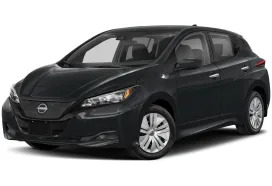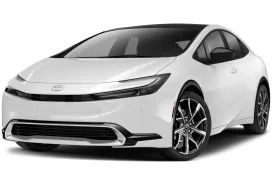There are quite a few taxi operators testing out electric cars by adding Nissan Leaf EVs to their fleets – whether that be New York (pictured), Hong Kong or Mexico City. It's a channel for the global automaker to sell more of the cars and give more people their own experience of being transported in a Leaf. But there can be a downside.
The experiment hasn't gone well in Osaka, Japan, where many cab owners and drivers can't wait to drive a non-Leaf taxi. In February 2011, the city made a deal with Nissan and 30 taxi firms to bring in 50 Nissan Leaf taxis. The Leafs were subsidized with incentives from the city and the national government that brought the price down to 1,780,000 yen (about $21,000 US) for the taxi firms.
Taxi drivers liked the Leafs at first. One taxi driver loved the Leaf and told Japan Today: "There's no vibration or knocks from the engine. They just glide smoothly. The electric power is far cheaper than outlays for gasoline, and there are few mechanical failures. Eventually we're certain that EV taxis will become the most common type on the road."
The driver's prediction was way off the mark. The Leafs are being utilized only about half as much as regular taxis in Osaka. The problem started right after the March 2011 Fukushima nuclear meltdown, right after the Leafs were delivered to the taxi fleets. Electricity had been an appealing alternative to gasoline for taxis as a clean, safe, and non-polluting source of energy. The positive image faded as electricity became scarce and the source of the power was called into question.
The cars themselves became another problem for taxi drivers – more specifically, the battery pack performance declined. "When the cars were new, you could drive about 100 kilometers (about 62 miles) on a full charge; but after two years of use, their maximum range is down to about one half of that. So you have to refuse passengers who request long trips," a taxi driver said.
What makes matters worse is that the government subsidy was a three-year program, and there's one more year left before the taxi operators can bring in a more practical car. "I'm getting out of this business," one of the Osaka cabbies said. "This is no way to earn a living."
The experiment hasn't gone well in Osaka, Japan, where many cab owners and drivers can't wait to drive a non-Leaf taxi. In February 2011, the city made a deal with Nissan and 30 taxi firms to bring in 50 Nissan Leaf taxis. The Leafs were subsidized with incentives from the city and the national government that brought the price down to 1,780,000 yen (about $21,000 US) for the taxi firms.
Taxi drivers liked the Leafs at first. One taxi driver loved the Leaf and told Japan Today: "There's no vibration or knocks from the engine. They just glide smoothly. The electric power is far cheaper than outlays for gasoline, and there are few mechanical failures. Eventually we're certain that EV taxis will become the most common type on the road."
The driver's prediction was way off the mark. The Leafs are being utilized only about half as much as regular taxis in Osaka. The problem started right after the March 2011 Fukushima nuclear meltdown, right after the Leafs were delivered to the taxi fleets. Electricity had been an appealing alternative to gasoline for taxis as a clean, safe, and non-polluting source of energy. The positive image faded as electricity became scarce and the source of the power was called into question.
The cars themselves became another problem for taxi drivers – more specifically, the battery pack performance declined. "When the cars were new, you could drive about 100 kilometers (about 62 miles) on a full charge; but after two years of use, their maximum range is down to about one half of that. So you have to refuse passengers who request long trips," a taxi driver said.
Charging has brought another wall to climb. Taxi drivers had been able to charge in about 15 minutes, but, recently, it has been taking 40 minutes or more. There are only eight charging stations in Osaka, and driving around to find them takes time out of finding potential rides. The problem gets worse on cold-weather days, when using the heater consumers more electricity – some drivers even shun the heater and offer passengers chemical pocket warmers and blankets. It's become a money-losing proposition for taxi drivers and owners.On cold days, some taxi drivers even shun the heater and offer passengers chemical pocket warmers and blankets.
What makes matters worse is that the government subsidy was a three-year program, and there's one more year left before the taxi operators can bring in a more practical car. "I'm getting out of this business," one of the Osaka cabbies said. "This is no way to earn a living."





Sign in to post
Please sign in to leave a comment.
Continue